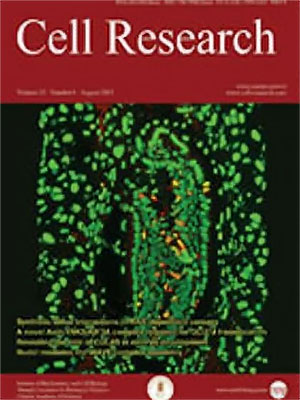
Volume 11, No 3, Sep 2001
ISSN: 1001-0602
EISSN: 1748-7838 2018
impact factor 17.848*
(Clarivate Analytics, 2019)
Volume 11 Issue 3, September 2001: 223-229
ORIGINAL ARTICLES
Down-regulated expression of atypical PKC-binding domain deleted asip isoforms in human hepatocellular carcinomas
FANG Chang Ming, Yong Hua XU*
Laboratory of Molecular and Cellular Oncology, Institute of Biochemistry and Cell Biology, Shanghai Institutes for Biological Sciences, Chinese Academy of Sciences, Shanghai 200031, China
Correspondence:
Asip is a mammalian homologue of polarity protein Par-3 of Caenorhabditis elegans and Bazooka of Drosophila melanogaster. Asip/Par-3/Bazooka are PDZ-motif containing proteins that localize asymmetrically to the cell periphery and play a pivotal role in cell polarity and asymmetric cell division. In the present study, we have cloned human asip cDNA and its splicing variants by 5'-RACE and RT-PCR using candidate human EST clones which have a high homology to rat asip cDNA. The full-length cDNA of human asip encodes a 1,353 aa protein exhibiting 88% similarity to the rat one. Human asip is a single copy gene consisting of at least 26 exons and localizing in human chromosome 10, band p11.2, with some extraordinarily long introns. All exon/intron boundary nucleotides conform to the ``gt-ag" rule. Three main transcripts were detected by Northern blot analysis, and at least five variants, from alternative splicing and polyadenylation, have been identified by RT-PCR and liver cDNA library screening. Exon 17b deleted asip mRNAs expressed ubiquitously in normal human tissues, including liver, on RT-PCR analysis. However, they were absent from most human liver cancer cell lines examined. More interestingly, the expression of exon 17b deleted variants was down regulated in 52.6% (10/19) clinic specimens of human hepatocellular carcinomas (HCCs), compared with the surrounding nontumorous liver tissues from the same patients. The presence of various splicing transcripts, the variation of their distribution among different tissues and cells, and their differential expressions in human HCCs suggest that human Asip isoforms may function in different context.
FULL TEXT | PDF
Browse 2668


